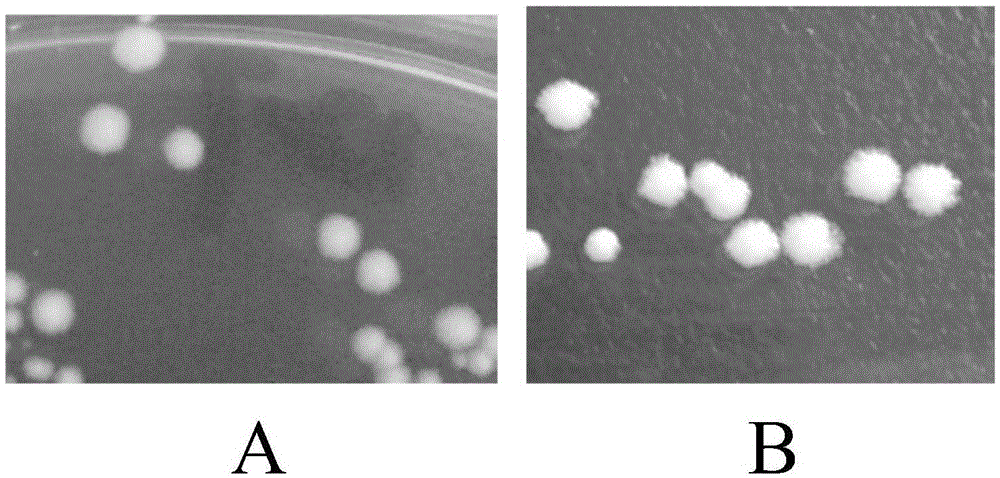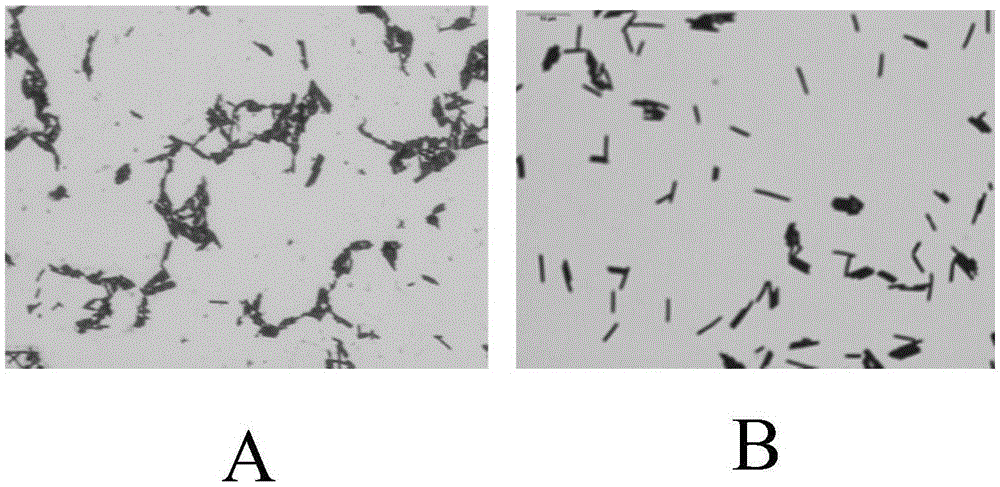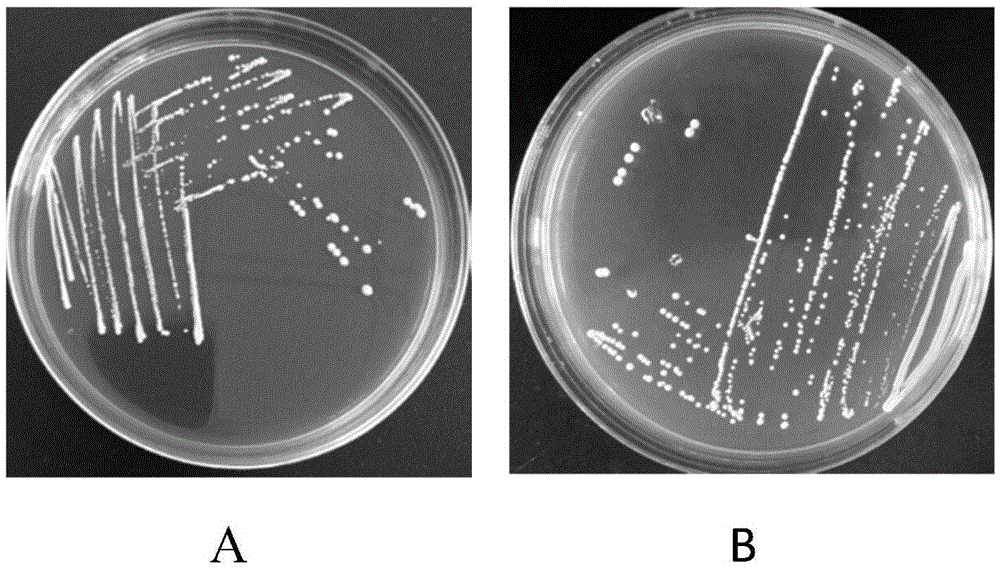Method for quickly distinguishing lactic acid bacterium strains
A technology of lactic acid bacteria and strains, applied in the field of microbiology, can solve the problems of high price, cumbersome operation of distinguishing lactic acid bacteria strains, unstable test results, etc.
- Summary
- Abstract
- Description
- Claims
- Application Information
AI Technical Summary
Problems solved by technology
Method used
Image
Examples
Embodiment 1
[0029] Embodiment 1 distinguishes Lactobacillus bulgaricus (Lacobacillus bulgaricus) and Lactobacillus helveticus (Lactobacillus bulgaricus)
[0030] Streak Lactobacillus bulgaricus and Lactobacillus helveticus on the MRS solid medium, pick a single colony and inoculate the two strains in the MRS liquid medium, culture at 37°C for 48 hours, collect the supernatant by centrifugation, and dilute the sample 25 times Use D-LDH and L-LDH to measure the ratio of D-lactic acid and L-lactic acid, and the specific detection reaction is carried out according to the system in Table 2 below:
[0031] Table 2 Reaction system for lactic acid determination
[0032]
[0033] The glycylglycine buffer is 0.5mol / L, pH8.9 glycylglycine buffer. Add D-LDH or L-LDH to react for 4 minutes, read the absorbance value (A2) after the reaction, calculate the change value of absorbance in the blank and sample (A2-A1), and subtract the change value of the absorbance of the sample from the absorbance val...
Embodiment 2
[0040] The distinction of embodiment 2 plant lactobacillus (Lacobacillus plantarum) and lactobacillus casei (Lacobacillus casei)
[0041] Streak culture of Lactobacillus plantarum and Lactobacillus casei on MRS solid medium, select a single clone in MRS liquid medium, culture at 37°C for 36 hours, centrifuge to take supernatant, dilute 20 times and use as shown in Table 3 below The system measures the concentration of D-lactic acid and L-lactic acid:
[0042] Table 3 Reaction system for lactic acid determination
[0043]
[0044]The glycylglycine buffer is 0.5mol / L, pH8.9 glycylglycine buffer. Add D-LDH / L-LDH to react for 6 minutes. After the reaction, read the absorbance value (A2), calculate the change value of absorbance in the blank and sample (A2-A1), and subtract the change value of the absorbance of the sample from the absorbance value of the blank The change value of , that is, ΔA D-乳酸 and ΔA L-乳酸 ,
[0045] Calculate the concentration of D-lactic acid and L-la...
Embodiment 3
[0050] The distinction of embodiment 3 Lactobacillus plantarum and Lactobacillus casei
[0051] Streak culture of Lactobacillus plantarum and Lactobacillus casei on MRS solid medium, select a single clone in MRS liquid medium, culture at 37°C for 36 hours, centrifuge to take supernatant, dilute 20 times and use as shown in Table 3 below The system measures the concentration of D-lactic acid and L-lactic acid:
[0052] Table 3 Reaction system for lactic acid determination
[0053]
[0054] The glycylglycine buffer is 0.5mol / L, pH8.9 glycylglycine buffer. Add D-LDH / L-LDH and react for 5 minutes. After the reaction, read the absorbance value (A2), calculate the change value of absorbance in the blank and sample (A2-A1), and subtract the change value of the absorbance of the sample from the absorbance value of the blank The change value of , that is, ΔA D-乳酸 and ΔA L-乳酸 ,
[0055] Calculate the concentration of D-lactic acid and L-lactic acid by the following calculation f...
PUM
 Login to View More
Login to View More Abstract
Description
Claims
Application Information
 Login to View More
Login to View More - R&D
- Intellectual Property
- Life Sciences
- Materials
- Tech Scout
- Unparalleled Data Quality
- Higher Quality Content
- 60% Fewer Hallucinations
Browse by: Latest US Patents, China's latest patents, Technical Efficacy Thesaurus, Application Domain, Technology Topic, Popular Technical Reports.
© 2025 PatSnap. All rights reserved.Legal|Privacy policy|Modern Slavery Act Transparency Statement|Sitemap|About US| Contact US: help@patsnap.com



